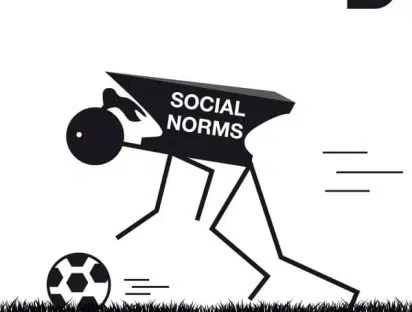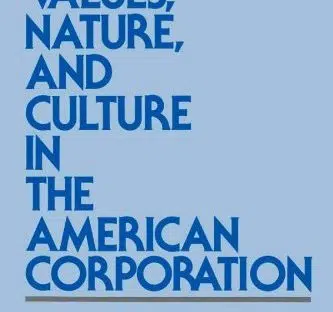In contemporary business life, we often refer to “good practices” or “best practices.” These are desirable guidelines oriented towards a desirable outcome. In the phrase “best practice,” the superlative “best” can take on at least a functional and a moral meaning. But the latter becomes ethically meaningful only if the concept of practice receive a “thick” definition. Descriptive and evaluative uses of a word are usually separated. But this difference is sometimes difficult to establish. When you tell your friend: “What you did was courageous,” your friend’s action (characterized by courage) is both factually described and normatively evaluated. Of course, a lot of words do not refer, in their use, to praise or blame – they are “neutral” in this respect. This is the case with the word “practice,” which is widely employed in ordinary language. As a common noun, it designates, among other things, an activity, i.e. a set of coordinated actions aiming at specific outcomes. Aristotle states that “every action must be due to one or other of seven causes: chance, nature, compulsion, habit, reasoning, anger, or appetite” (1). A practice aims at the realization of something external to us (it comes under the idea of production, the result of which being for example the work of the artist), which supposes “reasoning” (one must choose between several ways of acting), “habit” (a practice is “a habitual way of acting”, the French Le Robert dictionary says), sometimes a lively and constant desire. There is a simple way to check that the word “practice” is neutral: to observe that, when we evaluate a practice, we necessarily add an adjective to it. This adjective quite often denotes something general. We are frequently satisfied with the adjectives “good” or “bad.” Phrases such as “good practices” or “bad practices” are widely used in ordinary language. This is the case in business life. Business good or best practices are desirable guidelines (2). They often include the description of a desirable end, the identification of criteria derived from that description and the inventory of typical cases (3). Identifying good practices produces effects in itself as it encourages professional exchanges, contributes to the constitution of a community of “practitioners,” raises the awareness of actors not directly involved, and, finally, highlights the importance of the end pursued through the practice. I will go no further in seeking the benefits of this approach. I will just be concerned with the meaning of the word “good” in “good practice.” First of all, “good practice” has a functional sense. Indeed, a good practice fulfils a function: contributing effectively to achieving the ends which constitute its raison d’être. Second, the adjective “good” has a normative meaning. For if a good practice can be easily described in a narrative way, as when describing the stages of a project, it can also be described using a set of rules. A good practice is then understood as a sequence of operations that comply with these rules. In business, this meaning corresponds to the well-known notion of “compliance.” Third, the “good” nature of a practice can also stem from the value of transparency which is associated with it. Adopting a “good practice” often means placing one’s ways of doing things in the sight of others. In this sense, “good practice” differs from what is called “the tricks of the trade,” which often remain in the shadows. This point suggests that the adjective “good,” in “good practice,” may have a moral meaning. One can obviously think that a practice is good because the ideal it pursues is itself considered as good and because it does not include bad ways of doing things – for example, good practices associated with the ideal of a good corporate governance cannot include arbitrary decision-making procedures. But this point deserves a clarification. Alasdair MacIntyre argues that a practice is one of the places where moral virtues can be cultivated and developed. In his definition of a practice, virtues are associated with “standards of excellence”: “By a ‘practice’ I am going to mean any coherent and complex form of socially established cooperative human activity through which goods internal to that form of activity are realized in the course of trying to achieve those standards of excellence which are appropriate to, and partially definitive of, that form of activity, with the result that human powers to achieve excellence, and human conceptions of the ends and goods involved, are systematically extended.” (4) Unsurprisingly, MacIntyre observes that he uses “the word ‘practice’ in a specially defined way which does not completely agree with current ordinary usage.” For example, he writes, “bricklaying is not a practice; architecture is. Planting turnips is not a practice; farming is.” (5) MacIntyre’s ambition is to place the definition of a practice at a sufficiently high level of description to address the question of the relationship between the virtues of the people involved (farmers for agriculture, players for football or chess) and the ends or goods they try to achieve. Some of these ends are internal to the practice (they correspond to excellence in work, e.g. “strategic imagination and competitive intensity” in chess), other are external (money, status, reputation). Balancing these ends is a good in itself, a good that every participant in the practice should pursue. Thus conceived, a good practice refers to substantial moral concepts (mainly virtues and goods, and the fact that they contribute to a community well-being), not only to the conformity to a set of rules (the compliance view). Now, it is not at all certain that “good practices” as they are ordinarily understood in business refer to such a morally significant, or “thick,” account of a practice. The compliance view is assuredly clear and simple, but it may lead to losing sight of the importance of practices in moral life. Alain Anquetil (1) Rhetoric, I.10.VIII. (2) See the definition given by the online Business Dictionary. (3) See for example the global initiative Global Sustainable Tourism Council (GSTC). (4) A. MacIntyre, After virtue, Notre Dame, Notre Dame University Press, 1984. (5) Ibid.




